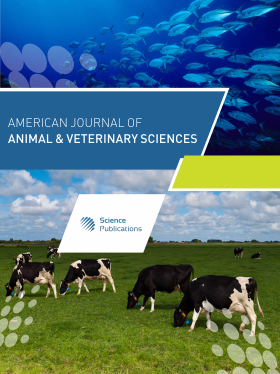Genetic Characterization of a Bovine Breed (Tabapua) Under Artificial Selection Located in the Amazon Region
- 1 Federal University of Piauí, Brazil
- 2 Chagas Institute, Brazil
- 3 Federal Rural University of Amazon, Brazil
- 4 Federal University of Pará, Brazil
- 5 Colorado Renewable Energy Society, United States
Abstract
Brazil currently has the biggest commercial bovine cattle population in the world. Several different breeds that come from Europe and India compose it. They are primarily used for dairy and meat production. In Brazil, several high quality genetic background cattle are kept in a condition known as pure breed, meaning no other animal of different genetic background is interbreeding with them and consequently, affecting their genetic variability. Hence, these cattle are apparently vulnerable to lose of their genetic variability by continuous interbreed. This scenario has encouraged this study to evaluate the genetic variability of one cattle type, known in Brazil as Tabapua breed, located at the Brazilian Amazon, by using DNA microsatellites loci as molecular markers. Blood samples were randomly taken from 60 animals and submitted to DNA extraction, followed by multiplex PCR, using 11 microsatellites primers recommended by International Society of Animal Genetics (ISAG) for paternity test in bovine. PCR products were genotyped in an automated DNA sequencer and polymorphic loci were found. They presented the following data: Average allele number: 6.727±1.679; Average effective allele number: 3.772±1.266; Shannon index: 1.454±0.302; Average heterozygosis: 0.706±0.101. Polymorphic Informative Content (PIC) varied from 0.452 to 0.815; Average Fis was -0.037±0.054. The probability for Hardy-Weinberg equilibrium was not significant (p>0.05) for all loci. The power of discrimination and power exclusion were >0.999 and >0.981 respectively, for PE1 (with offspring and their parental genotypes) and PE2 (without one of the parental genotypes). The pure bovine breed Tabapua evaluated in this study showed significantly high genetic variability. Because Tabapua is a commercial breed, in which reproductive animals are selected for business, the high genetic variability can be linked to the high circulation of animals purchased for reproduction. Therefore, they could possibly be inserting new alleles in this cattle population.
DOI: https://doi.org/10.3844/ajavsp.2012.226.232

- 5,805 Views
- 5,404 Downloads
- 1 Citations
Download
Keywords
- STRs and Zebu
- Heterozygosis
- Genetic Diversity
